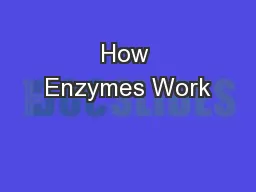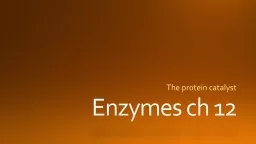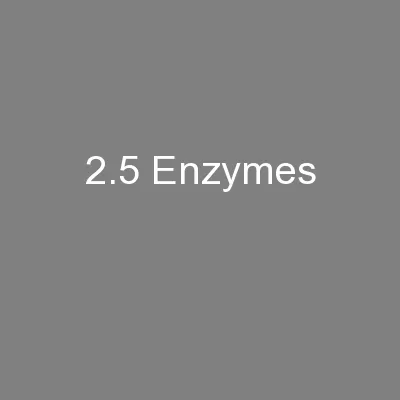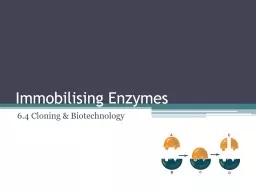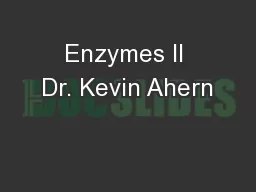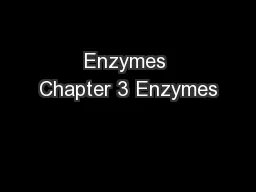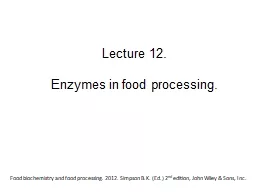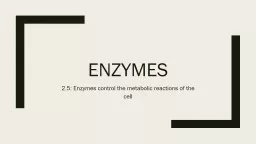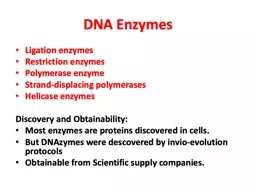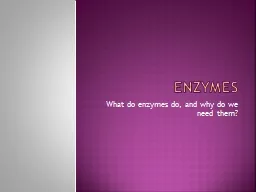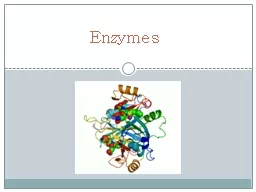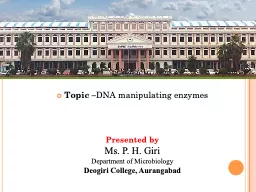PPT-How Enzymes Work
Author : marina-yarberry | Published Date : 2017-07-23
Pratt amp Cornely Ch 6 Enzymes Biocatalystactive site Proteins Substrate Reaction specificity Stereospecificity Coupled reactions Regulation Rate Enhancement Orotidine
Presentation Embed Code
Download Presentation
Download Presentation The PPT/PDF document "How Enzymes Work" is the property of its rightful owner. Permission is granted to download and print the materials on this website for personal, non-commercial use only, and to display it on your personal computer provided you do not modify the materials and that you retain all copyright notices contained in the materials. By downloading content from our website, you accept the terms of this agreement.
How Enzymes Work: Transcript
Download Rules Of Document
"How Enzymes Work"The content belongs to its owner. You may download and print it for personal use, without modification, and keep all copyright notices. By downloading, you agree to these terms.
Related Documents

